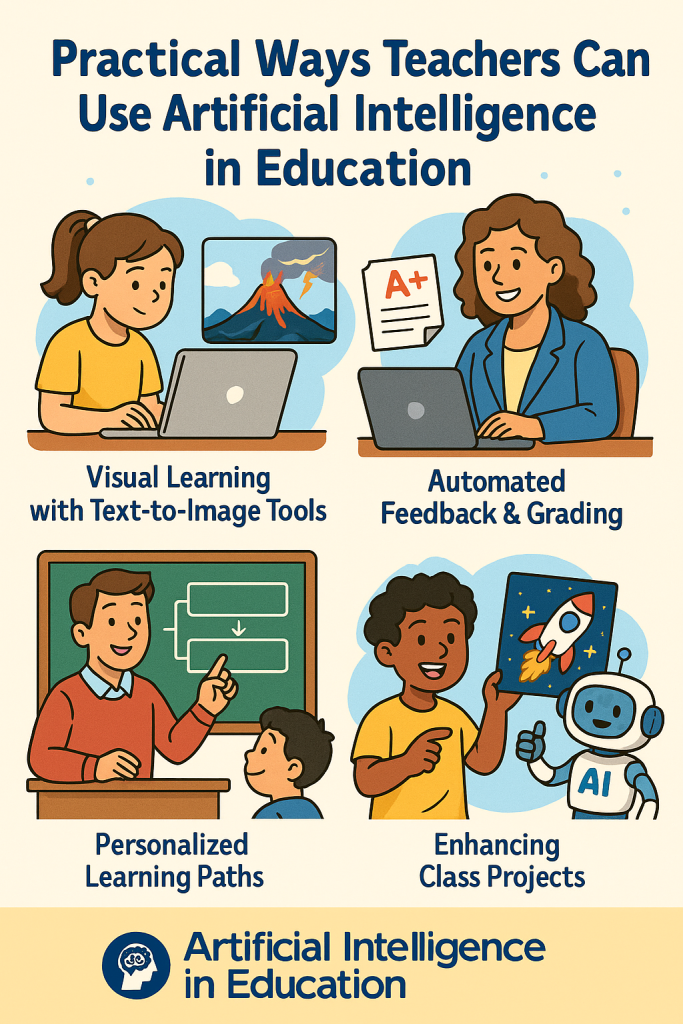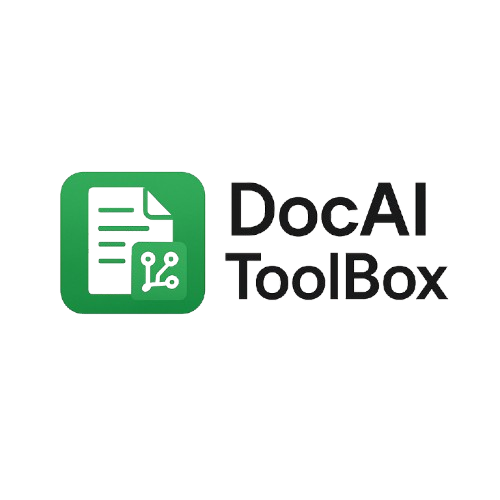Practical Ways Teachers Can Use Artificial Intelligence in Education

Artificial intelligence is no longer a futuristic concept—it’s already transforming how we teach, learn, and engage students. With the growing number of classroom-ready AI tools, educators now have practical ways to integrate artificial intelligence in education to save time, personalize instruction, and boost creativity.
Whether you’re teaching 5th graders or high school seniors, AI can support your teaching goals without requiring advanced tech skills. Below are some hands-on, classroom-ready ideas teachers can start using today.
1️⃣ Visual Learning with Text-to-Image Tools
One of the most exciting ways to use artificial intelligence in education is through text-to-image generation. Students simply write a sentence, and AI creates a visual that matches their idea. This is especially useful for:
- Creative writing prompts
- Science projects (e.g., “a volcano erupting during a thunderstorm”)
- History scenes (e.g., “ancient Roman marketplace with people”)
- Math word problems with visual elements
Tools like the DocAI Toolbox for Google Docs make this easy. Students can type a description and instantly generate an AI-powered illustration right in their documents. It’s a fantastic way to support visual learners and build stronger vocabulary and comprehension.
2️⃣ Automated Feedback & Grading
AI-powered writing assistants can help review grammar, suggest sentence structure improvements, and even give feedback on tone. While not a replacement for teacher feedback, these tools save time on first drafts and give students immediate guidance.
- Use tools like Grammarly or Google’s Smart Compose for feedback
- Allow students to revise before submitting final drafts
- Encourage self-reflection through AI-suggested edits
3️⃣ Personalized Learning Paths
AI tools can adapt content to match each student’s learning level. This is especially powerful for differentiated instruction. Many platforms use algorithms to adjust difficulty based on student performance in real time.
- Platforms like Khan Academy and IXL use adaptive technology
- Assign AI-recommended practice exercises based on classroom data
- Help struggling students catch up without slowing down the whole class
4️⃣ Lesson Planning Support
Need to create a quiz, writing prompt, or reading comprehension questions in minutes? AI tools like ChatGPT can generate teaching materials, lesson ideas, and even age-appropriate vocabulary lists in seconds.
- Ask for vocabulary lists tied to your weekly theme
- Generate quick writing prompts for any grade level
- Create rubrics or scaffolding tools with AI suggestions
5️⃣ Enhancing Class Projects
Let students use AI to generate images, summaries, titles, or even character profiles for stories and presentations. By integrating creativity with AI, students learn to use technology as a tool—not just a toy.
Example: Have students use DocAI Toolbox to illustrate a group story or create images for a science fair poster, making learning both visual and interactive.
🎯 The Power of Practical AI in Classrooms
Bringing artificial intelligence in education doesn’t mean replacing the teacher—it means enhancing what you already do best. By using tools like DocAI Toolbox, writing assistants, and adaptive platforms, educators can save time, engage students in new ways, and create more personalized learning experiences.
🧑🏫 Final Tip
Start small. Try using an AI tool for a single lesson or homework assignment. Watch how students respond—and don’t be surprised if they start asking for more.
AI is here, and it’s teacher-friendly. With tools like DocAI Toolbox, you can bring imagination, efficiency, and creativity into every corner of your classroom.

